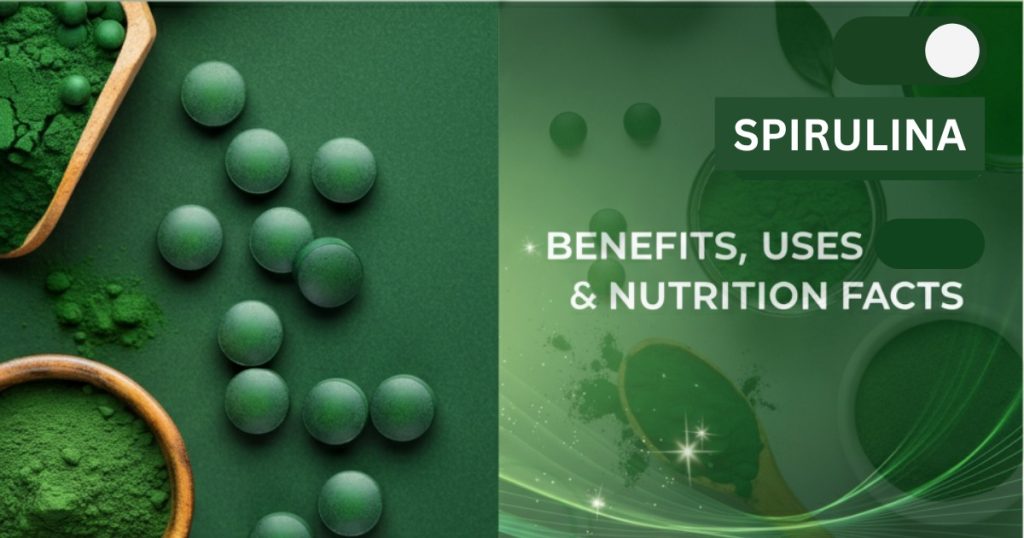
What Is Spirulina? Benefits, Uses & Nutritional Facts Explained
One common dietary supplement is spirulina. For generations, people have been consuming spirulina, an algae that grows well in both fresh and saltwater. It is said to be very healthful and is high in proteins, vitamins, and minerals. Spirulina has several advantages, such as boosting heart health, bolstering the immune system, and fortifying our muscles. Continue reading to find out more about what is spirulina, its health advantages, and how to take it.
What is Spirulina?
Spirulina is a kind of cyanobacteria, or blue-green algae, that grows well in warm, alkaline water sources, such as fresh and saltwater. Its high nutrient content has caused it to reappear as a trendy new-age supplement. It is a well-liked nutritional supplement all over the world since it is high in proteins, vitamins, minerals, and antioxidants. It comes in a variety of forms, including powder spirulina, capsule spirulina, and tablet spirulina, and its cultivation is environmentally sustainable, according to nutritionist Veena V.
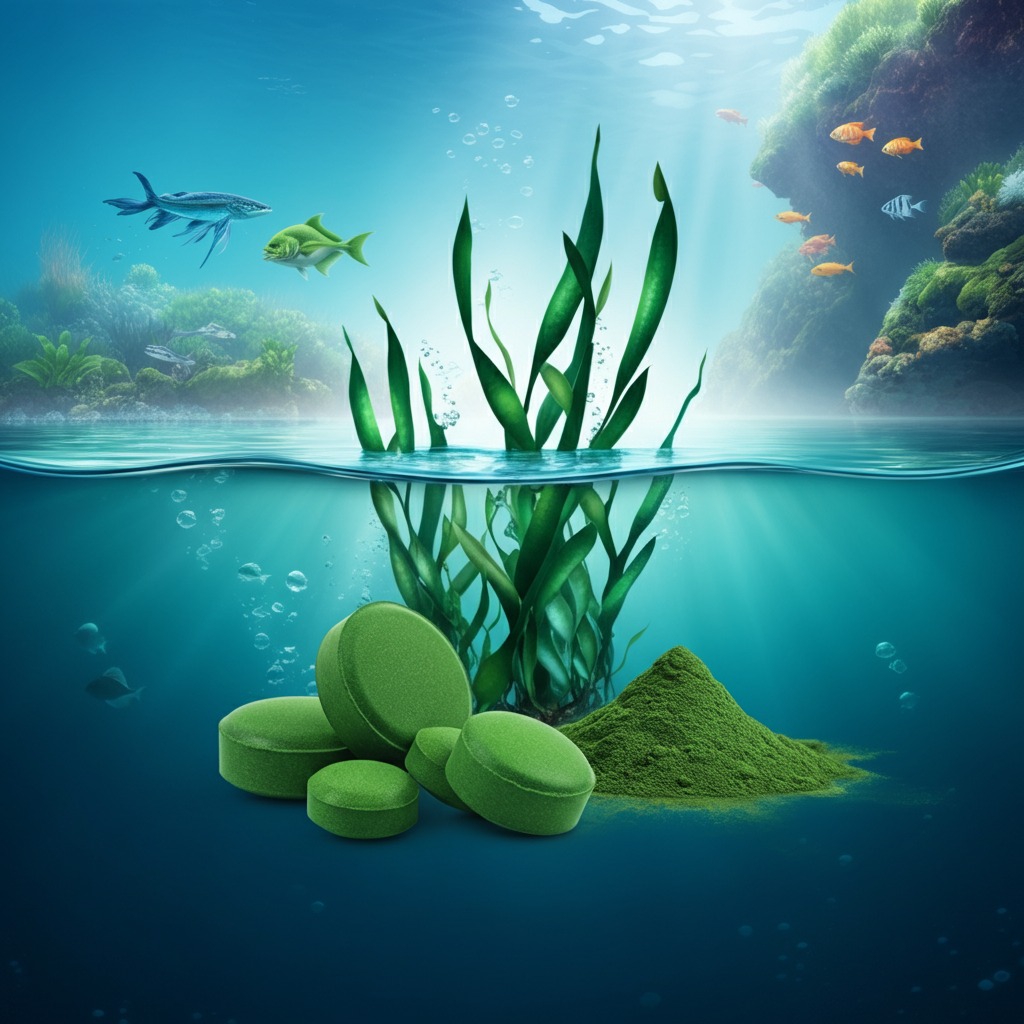
What is Spirulina Made From?
Spirulina is a natural blue-green algae (cyanobacteria) that grows in both fresh and saltwater environments. It’s made from the dried biomass of these algae, primarily species like Arthrospira platensis and Arthrospira maxima. Rich in protein, vitamins, minerals, and antioxidants, spirulina is often processed into powders, tablets, or capsules and used as a dietary supplement. Its high nutrient density makes it popular in health foods and wellness products.
Spirulina Nutrition Information
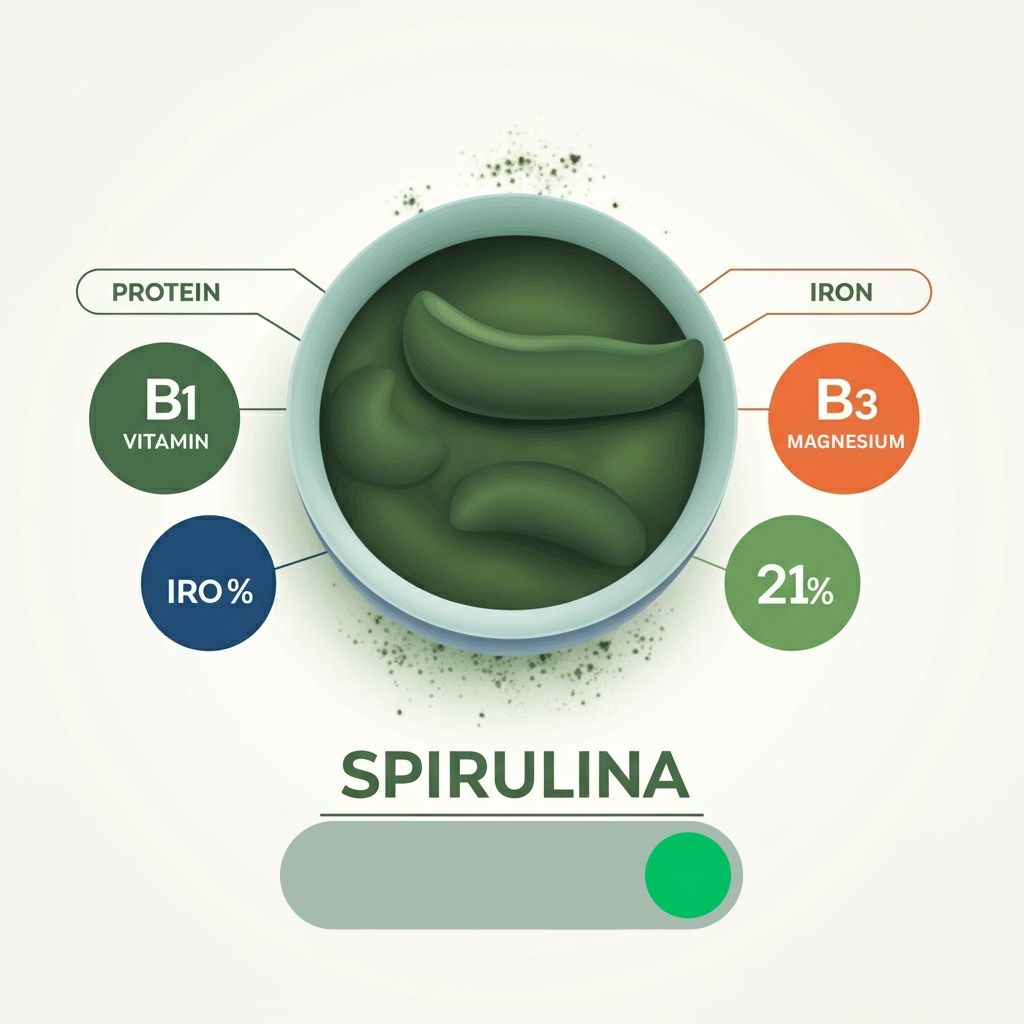
One tablespoon of green spirulina contains:
- Calories: 20
- Protein: 4 grams
- Fat: 1 gram
- Carbohydrates: 2 grams
- Fiber: 0 grams
- Sugar: 0 grams
Spirulina is a good source of:
- Thiamine (vitamin B1)
- Riboflavin (vitamin B2)
- Niacin (vitamin B3)
- Copper
- Iron
Magnesium is also present in spirulina. Your heartbeat and regular daily activities like muscle contractions are supported by this mineral. Although most individuals don’t receive enough of it in their diet, it is also in charge of making protein and energy.
What are The Health Benefits of Spirulina?
1. Nutrient-rich
Blue Spirulina has a lot of nutrients. About 60–70% of its weight is made up of protein, which includes all of the essential amino acids. Vitamins A (beta-carotene), B1 (thiamine), B2 (riboflavin), B3 (niacin), B6, B9 (folic acid), C, D, and E are also included. Iron, magnesium, calcium, potassium, and zinc are essential minerals that support a number of body processes. The amount of protein is sufficient to give the body all of the required amino acids.
2. Antioxidant and Anti-Inflammatory
The high antioxidant content of spirulina, especially phycocyanin, aids in the body’s fight against inflammation and oxidative stress. By scavenging free radicals, antioxidants lower the incidence of long-term conditions including cancer and heart disease. A study that was published in the International Journal of Clinical Practice claims that phycocyanin reduces inflammation, which aids in the fight against oxidative stress.
3. Immune system support
By boosting the synthesis of antibodies, cytokines, and other infection-fighting cells, spirulina may improve the immune response. It might increase infection resistance, which would make it a useful supplement during flu season. Spirulina is more effective than the well-known antihistamine cetirizine for relieving allergic rhinitis, according to a study published in ACTA Otorhinolaryngology.
4. Improves muscle strength and endurance
Spirulina aids in the growth and repair of muscles because of its high protein content and antioxidant qualities. Regular physical activity can help athletes and people recover more quickly, have more endurance, and lessen muscular tiredness. Spirulina pills were found to improve an athlete’s performance during an arm cycling workout by raising oxygen levels, according to a study published in the European Journal of Applied Physiology.
5. Heart health
By lowering blood pressure and cholesterol, spirulina may help lessen the risk of cardiovascular illnesses. It has been demonstrated to raise HDL (good cholesterol) and lower triglycerides and LDL (bad cholesterol). According to a study of five research papers published in Nutrients, individuals with high blood pressure can benefit from consuming up to 8 g of spirulina daily.
6. Blood sugar control
Those who already have diabetes or are at risk of getting it may benefit from spirulina’s ability to control blood sugar levels. According to animal studies that were published in Cambridge Open Access, spirulina affects insulin secretion and may have a hypoglycemic effect. According to a different study that was published in the Journal of Diabetes and Metabolic Disorders, patients with type 2 diabetes may benefit from taking 0.8–8g of spirulina to lower their fasting blood sugar levels.
7. Anaemia treatment
Anaemia can cause a great deal of fatigue, but it can be prevented with the help of spirulina. According to a study that was published in the International Journal of Caring, spirulina can assist pregnant women manage their anemia during the second trimester. Iron deficiency in young children can also be treated with it.
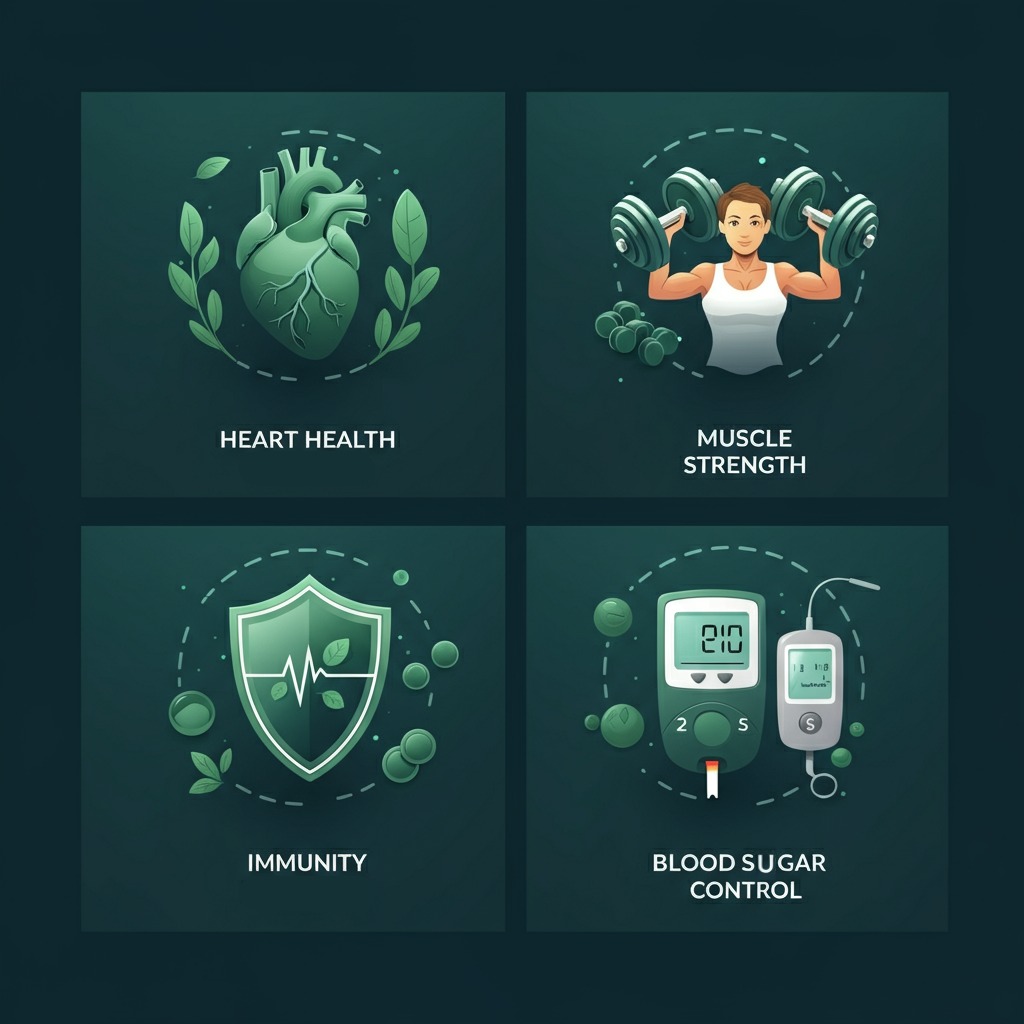
Danger of Spirulina!
Although there are many advantages to spirulina, there are also some dangers.
1. Contamination
Spirulina may contain toxins like heavy metals (such as lead, mercury, and arsenic), dangerous microorganisms, or microcystins if it is collected from contaminated waterways or handled incorrectly. In addition to numerous health problems, these pollutants can harm the liver.
2. Allergic reactions
Another uncommon side effect of spirulina is that some people may have allergic reactions to it, which can show up as respiratory problems, skin rashes, swelling, or itching. Starting with a little dose is crucial in order to check for any negative responses.
3. Digestive issues
Some people may experience mild digestive problems, including nausea, bloating, diarrhea, or cramping in their stomachs, as a result of consuming spirulina. Starting with a smaller dose and progressively increasing it will help control these symptoms, which are typically moderate.
4. Interference with medications
Certain medications, especially immunosuppressive ones taken by people with autoimmune illnesses or organ transplants, may interact with spirulina. Because of its high vitamin K content, it can also impact how well anticoagulants (blood thinners) work.
What Does Spirulina Do to The Body?
Spirulina is a concentrated supply of nutrients that support a number of body functions, adding to general health and well-being. Its high protein and vitamin B content, which are necessary for energy generation, raise energy levels. The anti-inflammatory and antioxidant substances boost the immune system, shield cells from harm, and encourage normal aging. Furthermore, spirulina helps the body rid itself of toxins and heavy metals by binding to them, according to Veena. Additionally, it helps to enhance digestion and nutrition absorption by encouraging the growth of good gut flora.
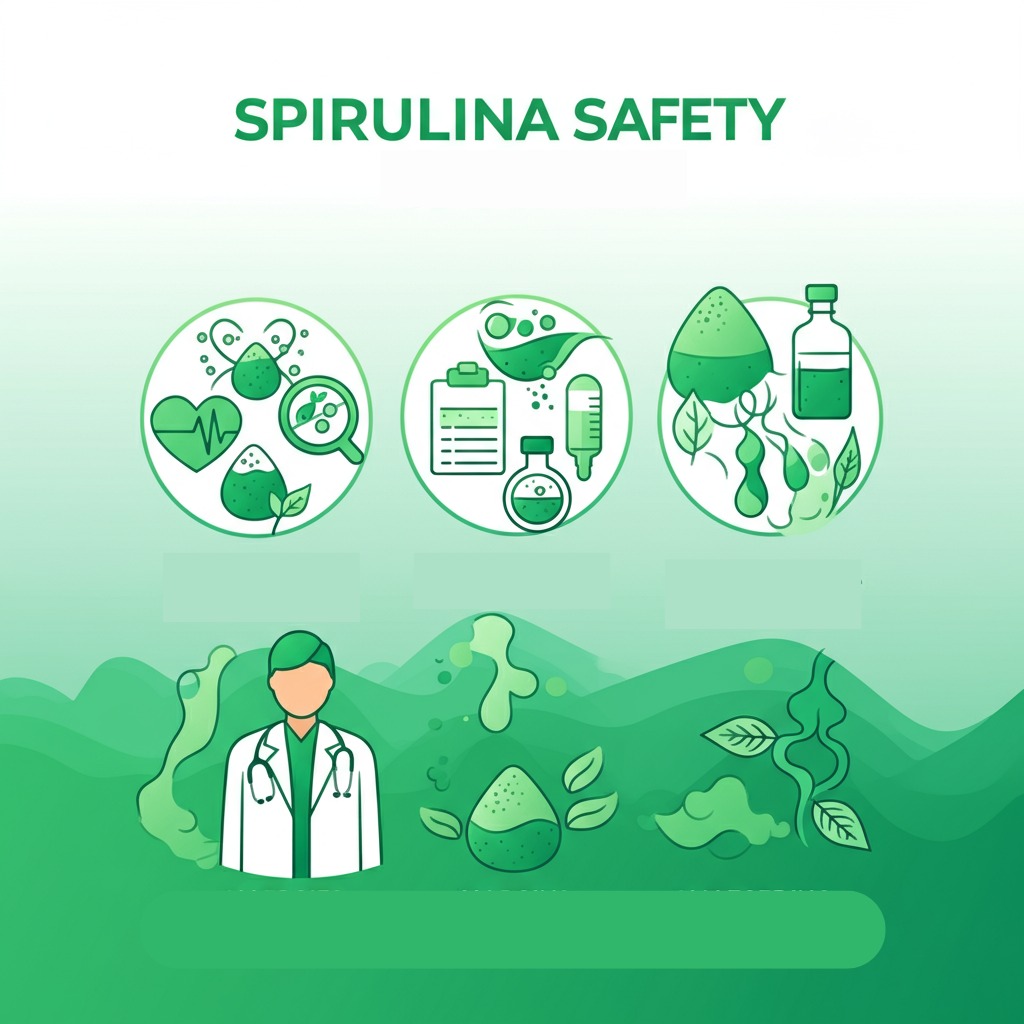
Can You Take Spirulina Every Day?
It is possible to include spirulina in a balanced diet and take it every day. Veena states that although the suggested dosage varies, the usual range is 1 to 3 grams daily. To monitor any negative responses, it’s crucial to begin with a smaller dose and progressively raise it as tolerated. Consistent nutrient intake and continuous health advantages can be achieved by daily ingestion.
Who Should Not Take Spirulina?
Some people should stay away from spirulina. These consist of:
- People who suffer from autoimmune disorders: Spirulina has the ability to boost the immune system, which may make symptoms worse for those who have lupus, rheumatoid arthritis, multiple sclerosis, or other autoimmune diseases.
- People with Phenylketonuria (PKU): People with PKU are unable to effectively metabolize phenylalanine, which is found in spirulina.
- Women Who Are Pregnant or Nursing: Spirulina should not be consumed by pregnant or nursing women unless a healthcare professional recommends it, as there is not enough evidence to support its safety.
- Individuals with Iodine or Seafood Allergies: Because spirulina may cause allergic reactions, people with iodine or seafood allergies should stay away from it.
- Those on Specific Medication: Because spirulina can interact with immunosuppressive medications and anticoagulants, those on these prescriptions should speak with their doctor before taking it.
How to Use Blue Spirulina Safely?
Precautions
Keep the following in mind while thinking about using spirulina:
- Spirulina’s safety for expectant or nursing mothers has not been proven. Before taking spirulina, consult your doctor if you are nursing a baby, intend to become pregnant, or are already pregnant.
- Spirulina’s safety in youngsters has not been shown. Before giving your child spirulina, please consult their pediatrician.
- Lake-grown spirulina can occasionally be tainted by lead, other heavy metals, or pollutants present in contaminated water, such as microcystins in the algae.
Spirulina may also need to be avoided by those with certain medical diagnoses, such as autoimmune diseases like multiple sclerosis and lupus. Phenylketonuria (PKU) and maple syrup urine disease (MSUD) are two other situations where spirulina may need to be avoided. These ailments impact how the body processes proteins or amino acids.
Interactions
When consuming spirulina, keep the following interactions in mind:
- Blood thinners: Each gram of spirulina contains a trace amount of vitamin K (0.26 micrograms). 20 Theoretically, taking a lot of spirulina may affect how some medications, such as Jantoven (warfarin), thin the blood.
- Medication for diabetes: Spirulina and metformin, a drug used to decrease blood sugar in patients with type 2 diabetes, may have synergistic effects. Twelve When using spirulina with diabetes drugs, care should be taken to avoid lowering blood sugar too much, which could lead to issues.
- Immune system medications: methotrexate, etanercept (Enbrel), and adalimumab (Humira) may interact with spirulina, though there is little data on this.
To find out which substances are in a supplement and in what amounts, it is crucial to carefully study the nutrition information panel and ingredient list. To address possible interactions with foods, other supplements, and medications, please go over this supplement label with your healthcare professional.
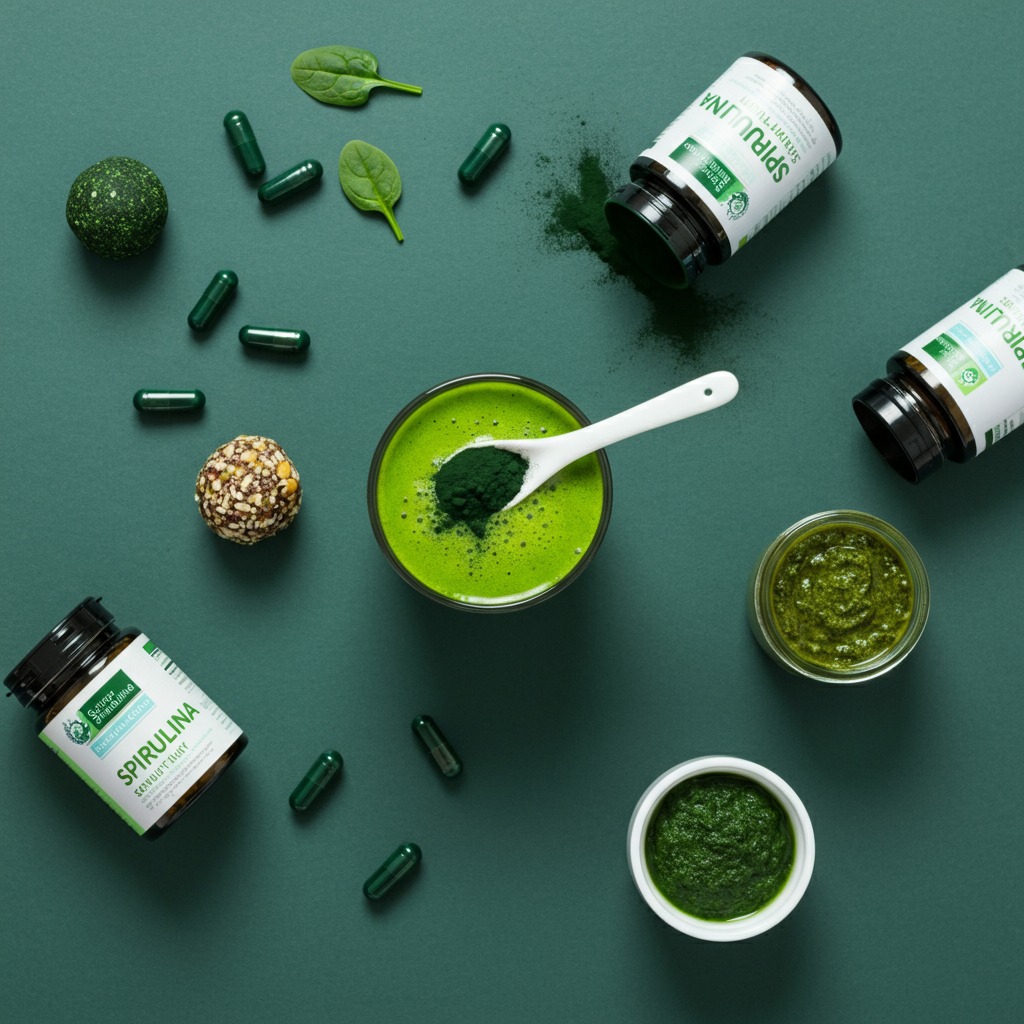
How Do I Add Spirulina to My Diet?
Spirulina can be incorporated into your diet in a number of ways, such as:
- Incorporate spirulina powder into your smoothie bowls or drinks.
- Add the powder to chocolate truffles or energy bites.
- Consume it as a liquid, pill, or capsule supplement.
The earthy or fishy flavor of spirulina is not to everyone’s taste or tolerance. If you don’t like the taste, try combining it with meals that have strong flavors, such as pesto that has a lot of garlic.
The Food and Drug Administration (FDA) in the US does not regulate dietary supplements in the same manner that it does prescription drugs. Consequently, the substances mentioned on the label may not be present in certain supplement items. Look for supplements that have undergone independent testing or certification by agencies like ConsumerLab.com, the U.S. Pharmacopeia, or the NSF. For individualized advice, speak with your pharmacist, registered dietitian nutritionist (RD or RDN), or healthcare professional.
Final Words
This is our overall guide to what is spirulina. Spirulina is a blue-green algae that is edible and includes a number of vital minerals. According to research, spirulina can lower blood pressure, blood sugar, and cholesterol levels while also raising the body’s antioxidant levels.
However, addressing lifestyle choices like eating habits and activity levels—which can have a big impact on one’s health and well-being—is the most effective strategy to treat chronic diseases.
Frequently Asked Questions (FAQ)
Spirulina may help reduce inflammation in the body since it is rich in minerals and antioxidants. It may lower your risk of a number of ailments and strengthen your heart and immune system.
Even at high dosages, spirulina is regarded as safe. It is advised by experts to consume no more than 8 grams daily.
Algae include spirulina. It is occasionally added to several meals and drinks, including energy bars, popcorn, and smoothies.
Because it is high in protein and low in calories, spirulina might help you feel full and prevent appetite. According to research, it might promote weight loss.